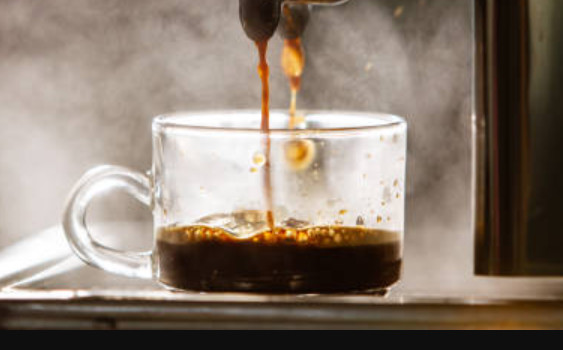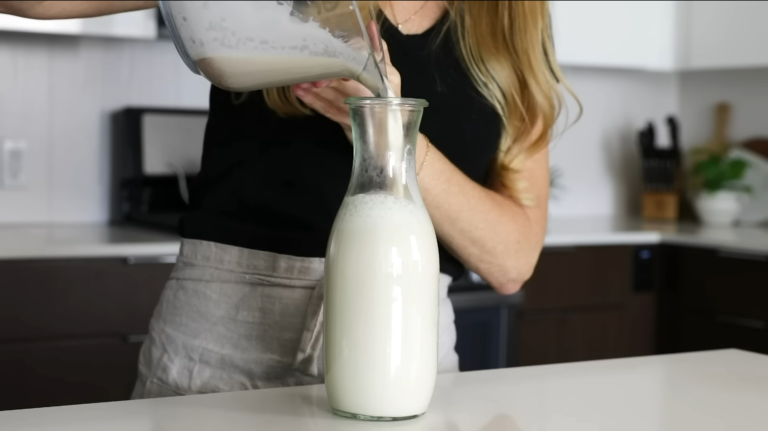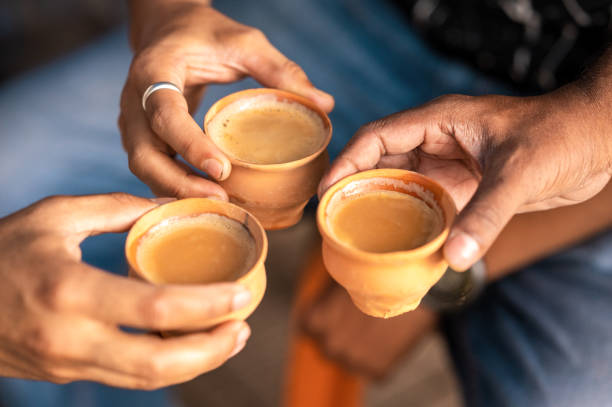How To Make Espresso Without A Machine? | Espresso Tips
Do you love the smooth, velvety taste of espresso but don’t have a state-of-the-art coffee machine to brew it with? Don’t worry – making your own espresso at home without fancy equipment is surprisingly simple. In this post we’ll provide you with some foolproof steps on how to make espresso without a machine – all without breaking the bank or looking for specialised gear. All you need is your favourite type of finely ground coffee, water and something to strain the liquid through. So if you’re wanting an invigorating pick me up that rivals cafe quality, read on and find out how to achieve barista level results using basic everyday supplies from your kitchen pantry.
Contents
Understanding Espresso
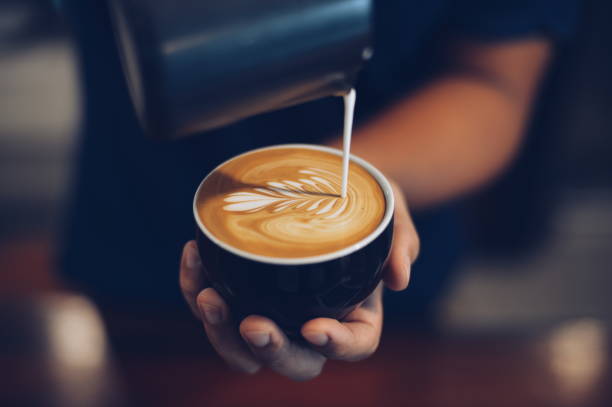
Before diving into preparation methods, let’s build foundational knowledge.
What is Espresso?
Espresso is a coffee drink made by forcing hot water through finely ground coffee beans under pressure. This results in a highly concentrated coffee liquid with a characteristic rich flavor and caramel-colored crema on top.
Some key characteristics that set espresso apart:
- Brewing method – uses pressure
- Bean grind – very fine
- Coffee to water ratio – condensed and strong
- Serving size – small, usually 1-2 ounces
- Total brew time – fast, around 25-30 seconds
Can You Make Espresso Without a Machine?
Brewing espresso without an automated, pump-driven machine presents some unique challenges:
- Generating adequate pressure and flow rate
- Heating water to optimal temperature
- Controlling variables for consistency
However, with the right gear and techniques, it is certainly possible to produce quality espresso at home sans machine. The remainder of this article will equip you with everything needed to become a master home barista.
Comprehensive Methods to Brew Espresso Without a Machine
Several devices allow you to simulate the high-pressure espresso process without an electrical appliance. Let’s explore some popular options:
Portable Espresso Maker
Overview: Manual, hand-powered devices designed specifically for espresso brewing. They provide pressure via a piston, lever, or vacuum-based system.
Pros: Compact size, control over variables, easy to use.
Cons: Requires some physical effort, smaller brew capacity.
Taste Profile: Strong, full-bodied espresso with pronounced crema.
Brewing Guide:
- Add finely ground espresso beans to filter basket. Use a dark roast and fine grind.
- Lock filter into place and add hot water to reservoir/boiler. Preheat if needed.
- Pull handle or depress piston using firm, steady pressure.
- Brew time should be around 25-30 seconds.
- Enjoy your fresh espresso immediately.
French Press Espresso
How It Works: A French press relies on full immersion and extended brew time rather than pressure to extract coffee oils and flavors.
Advantages: Most people already own one, very inexpensive option.
Taste Expectations: Rich, robust body though slightly less crema than other methods.
Brewing Instructions:
- Heat water to 195-205°F. Do not boil.
- Grind beans to an extra fine powder, just shy of turkish grind.
- Add coffee and water directly to French press carafe. Use a 1:4 coffee to water ratio.
- Insert plunger just until it touches the surface to help retain heat.
- Brew for 2-3 minutes.
- Plunge and pour coffee slowly.
Moka Pot Espresso
Introduction: Moka pots brew espresso by pushing hot water through coffee via steam pressure from your stovetop. Originating in Italy, they are also called stovetop espresso makers.
Benefits: Makes 2-3 servings at once, fun to watch it brew, inexpensive to purchase.
Taste Profile: Strong, rich taste with a dense foam head when executed properly.
Brewing Process:
- Fill bottom chamber with water just below valve.
- Insert funnel filter and add ground coffee. Use medium-fine grind.
- Assemble pot and place on low heat. Do not boil dry.
- Brew time is just a couple minutes.
- Remove from heat once upper chamber fills.
AeroPress Espresso
The AeroPress is a versatile manual device that utilizes air pressure to push water through coffee grounds. With some tweaking, it can produce a concentrated quasi-espresso.
Strengths: Compact, lightweight, extremely fast brewing, easy to clean up.
Taste Profile: Bright and bold, though crema is weaker than other methods.
Brewing Steps:
- Heat water to 200°F or just off boiling.
- Grind beans medium-fine, slightly coarser than espresso grind.
- Insert filter paper into cap, wet it, and assemble AeroPress chamber.
- Add 12-15g of coffee to chamber and pour in 30-50g hot water.
- Stir vigorously for 10 seconds to emulsify oils and saturate grounds.
- Insert plunger just enough to seal chamber and steep for 45 seconds.
- Plunge slowly and steadily for around 30 seconds.
- Dilute concentrate to taste and enjoy.
Deep Dive into Espresso-Making Essentials
Achieving café-style results hinges on perfecting key variables:
Choosing Beans and Grind Type
- Use freshly roasted darker roasts, ideally less than 4 weeks from roast date. Light roasts lack body.
- Finer grinds lead to increased extraction for bolder flavor. Espresso is ground just shy of powdery.
- Uniformly sized grinds allow even water dispersion and extraction.
Optimal Water Temperature
- The ideal water temp range is 195°F to 205°F. Below this under extracts, boiling risks burning the grounds.
- Lower temperature for dark roasts to reduce bitterness, and higher for lighter roasts.
- Preheating equipment like the Moka Pot will help stabilize temps.
| Roast Level | Ideal Water Temp |
| Light | 200°F – 205°F |
| Medium | 198°F – 203°F |
| Dark | 195°F – 200°F |
Coffee to Water Ratio
- Traditional ratios are between 1:1 to 1:3 coffee to water. Adjust to taste.
- Higher coffee concentration equals more intense, syrupy espresso.
- Lower concentration makes a less intense shot.
Water Quality
- Mineral content of water significantly impacts flavor.
- Try using bottled spring water to begin. Avoid distilled water.
- Eventually consider adding mineral salts to emulate café water.
Advanced Topics in Espresso Making
Let’s get into some next-level insights on crafting the perfect homemade espresso:
Health Considerations
- Espresso contains less caffeine per ounce than drip coffee, about 64mg in a single shot.
- Too much caffeine can cause jitters, anxiety, sleep issues. Monitor your intake.
- Antioxidants like chlorogenic acid may offer health benefits but require more study.
Comparison with Commercial Espresso
- Home espresso can absolutely rival coffee shops, but entails a learning curve.
- Key factors like achieving 9+ bar pressure can be challenging manually.
- Focus on nailing taste and mouthfeel over coming close to commercial output.
Sustainability and Ethical Sourcing
- Consider beans that are organically grown and ethically sourced for social + environmental benefit.
- Support fair trade and local roasters that build community.
- Reduce waste by buying whole beans and grinding as needed. Reuse filters when possible.
Practical Tips and Tricks
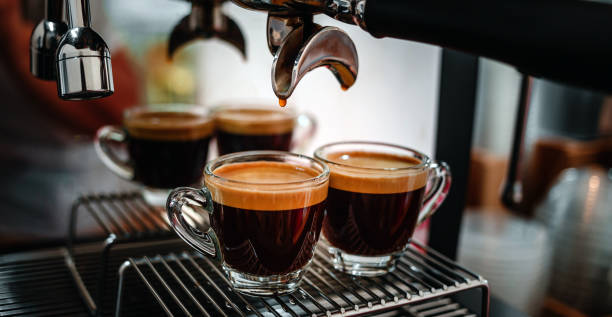
Apply these troubleshooting and enhancement ideas for espresso mastery:
Troubleshooting Common Problems
| Issue | Solution |
| Weak, watery espresso | Use hotter water, finer grind, or higher coffee ratio |
| Bitter, overextracted taste | Lower water temp, coarser grind, or lower coffee ratio |
| Thin or no crema | Ensure beans are fresh and finely ground |
| Coffee leaks during brewing | Tamp grounds more firmly or tighten filter basket |
Maintenance and Care
- Disassemble and wash equipment after each use to prevent buildup.
- Occasionally descale equipment by running vinegar through it.
- Store coffee beans in cool, dark place in airtight container.
Advanced Modifications and DIY Hacks
- Add a paper filter to the portafilter for extra sediment removal.
- Attach a ver-roof at the end of your brew wand to improve the crema.
- Insulate the brew chamber with tape or cloth to keep beans hotter.
- Build a custom DIY lever press to generate essential pressure.
Enjoying Your Espresso
Now for the best part – time to savor your homemade espresso.
Serving Suggestions and Pairings
- Enjoy espresso on its own or with steamed milk in drinks like macchiatos and cappuccinos.
- Pair with bitter chocolate or citrus like orange and grapefruit.
- For dessert, espresso is divine with tiramisu, affogato, or biscotti.
Incorporating Espresso into Recipes
- Use concentrated espresso to make lush coffee syrups.
- Add a shot to pancake or waffle batter for mocha flavor.
- Combine with rum or whiskey for an after-dinner espresso martini.
- Toss ribbons of chocolate in espresso ganache for a decadent icing.
Conclusion
With the methods outlined in this guide, you are fully equipped to begin crafting incredible espresso drinks right from your own kitchen. It may take some trial and error, but the joy of a sip of smooth, robust home-brewed espresso makes the effort well worth it. I encourage you to get creative, try different techniques, keep good notes, and above all – have fun nerding out over coffee.
https://bamboowokmanvel.com/food-drink/beverages/
Harmony Saunders is the CEO and founder of Bamboo Wok, a family-owned and operated Chinese restaurant that has been serving the Manvel, Rosharon, and Alvin communities for more than nine years. Our delicious dishes are made from scratch with the best ingredients, vegetables are fresh cut daily in our kitchen, and poultry is delivered every two days.
So whether you’re craving Chinese food for the family or need catering for your next event, please give us a try! We know you won’t be disappointed with our fresh, authentic Asian fare.

